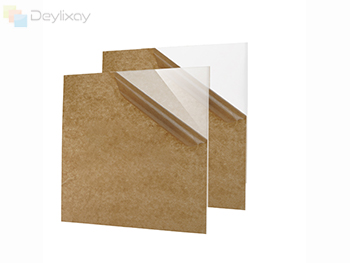Дар ҷаҳонии сохтмони муосири сохтмон, тарроҳӣ ва истеҳсолот интихоби маводҳои шаффоф ҳеҷ гоҳ гуногун набуд. Аз шишаи анъанавӣ ба маводи полимери муосир, ҳар як интихоби шаффоф хусусиятҳои беназир ва барномаҳои идеалиро пешниҳод мекунад. Ин дастурамали мукаммал-ро таҳқиқ мекунад, ки чӣ гуна plexigglass (акрилик) бо дигар маводҳои маъмули шаффоф муқоиса мекунад, ба шумо қарори огоҳона дар асоси ниёзҳои мушаххаси шумо дар бар мегирад.

Муқоисаи ҳамаҷонибаи моддӣ
1. Плекгласс (акрил / PMMA)
Афзалиятҳои асосӣ:
Ногузишти истисноии барқ (то 92%)
Нисфи вазни шишаи анъанавӣ
10-17 маротиба аз шиша тобовар
Обуҳавот ва муқовимати uv
Метавонад ба шакли мураккаб термобӣ бошад
Маҳдудиятҳо:
Ба харошидан майл
Муқовимати кимиёвӣ
Муқовимат ба гармии поёнӣ (70-80 ° C)
2. Шишаи анъанавӣ
Афзалиятҳои асосӣ:
Шиддатнокии баланд ва муқовимати сифр
Монеаи пурра зидди газ ва намӣ
Муқовимати гармии аъло (400 ° C +)
100% такроран бозсозӣ ва экологӣ дӯстона
Маҳдудиятҳо:
Вазнин ва душвор аст
Шикаста ва шарм медорад
Фарқияти маҳдуд
Таҷдиди пасти нури поён (80-90%)
3. Васетҳои поликарбонат (PC)
Афзалиятҳои асосӣ:
Муқовимати истисноии таъсири лоиҳа (30x қавитар аз акрил)
Муқовимати баландии гармӣ (120 ° C +)
Фуркунандаи аъло
Метавонад хунук бошад
Маҳдудиятҳо:
Арзиши баландтар
Ба зард дар беруни бино моил
Талаботи гармиро талаб мекунад
4. Полелистрейс (PS)
Афзалиятҳои асосӣ:
Аксари шаффофии иқтисодӣ
Коркарди ҷудошавии осон
Хусусиятҳои хуби гармидиҳӣ
Маҳдудиятҳо:
Шикаста ва барои фишурдани фишор
Муқовимати бади обу ҳаво
Муқовимати кимиёвии маҳдуд
Роҳнамои интихоби барнома
Барномаҳои меъморӣ
Skylights: Acrylic Acrylice тавсия дода мешавад
Монеаҳои бехатарӣ: поликарбонат барои ҳифзи ҳадди аксар
Windows / Partions: шишаи ҳароратҳо бартарӣ доранд
Намоишҳои тиҷоратӣ
Ҳолатҳои намоиш: шишаи равшан барои пешниҳоди мукофоти
Қуттиҳои сабук: акрили Opal барои дифияи сабук
Намоишгоҳи намоишӣ: акрли сабук барои насби осон
Истифодаи саноатӣ
Таҷҳизоти таҷҳизот: поликарбонат аз таркиш
Панелҳои асбобҳо: акриликии тобовар
Сипарҳои муҳофизаткунанда: поликарбонат барои бехатарии оптималӣ
Барномаҳои истиқоматӣ
Сатҳи мебелҳо: шиша ё акрили ғафсӣ
Ҳаммом
Ададҳои ороишӣ: Акрилӣ барои тағйирпазирии тарроҳӣ
Омилҳои калидӣ
1. Мулоҳизаҳои буҷет
Интихоби иқтисодӣ: Polystiener> Acrylic> полигарбонат> шиша
Арзиши дарозмуддат: Масъалаи таваққуф ва нигоҳдорӣ
2. Талаботи бехатарӣ
Муҳити вазнини таъсир: поликарбонат
Эҳтиёҷоти умумии бехатарӣ: шишаи акрилӣ ё шиша
Тамос бо ғизо: Санҷиши сертификатҳои моддӣ
3. Талаботи коркард
Шаклҳои мураккаб: Қобилияти терригменти акректори акректори
Истеҳсоли оммавӣ: Маводҳои шаклдиҳӣ
Тағиротҳои дар маҳал: Мушкилии акрилӣ
4. Омилҳои экологӣ
Истифодаи беруна: Маводҳои UUL-СОМИН
Муҳитҳои баландсифат: поликарбонат ё шиша
Express Meciled: Муқаддима Муқовимати кимиёвӣ
Тамоюлҳои инноватсионӣ
Маводҳои интеллектуалӣ
Шишаи оқилонаи электрохомик
Технологияи пайвасткунии худ
Композитсияҳои такмилёфта
Экс-навовариҳо
Маводи шаффофии BOI
Технологияҳои такрории пешрафта
Ҳадафҳои тарроҳии сабук
Маслиҳатҳои интихобии амалӣ
Барои санҷиши лоиҳаҳои калон намунаҳо дархост кунед
Таъминкунандагон дар асоси экспертизаи техникӣ
Сертификатсияҳо ва стандартҳои сифатро тасдиқ кунед
Баррасии дастгирии пас аз фурӯш ва кӯмаки техникӣ
Беҳтар кардани хароҷотҳо бидуни талабот
Хулоса
Ҳеҷ гуна "интихоби беҳтарин" дар байни маводи шаффоф "интихоби беҳтарин" танҳо "интихоби бештар мувофиқ барои барномаи мушаххаси шумо вуҷуд надорад. Варақаҳои Plexigiglass дар самаранокии вазн, коркард ва ба шишаи анъанавӣ сахттар ва муқовимати обу ҳаво пешниҳод мекунад. Поликарбонат иҷрои бехатарии бебозгаштро таъмин мекунад. Мо тавсия медиҳем, ки дар асоси талаботҳои мушаххаси лоиҳаи шумо, муҳити истифодаи лоиҳа ва маҳдудиятҳои буҷетӣ муқоисаро муқоиса менамоем.
Машварат бо мутахассисони моддӣ метавонад фаҳмиши арзон барои барномаҳои муҳимро таъмин кунад. Бо фаҳмидани бартариҳои беназир ва маҳдудиятҳои ҳар як мавод, шумо метавонед қарори оптимизатсияро, ки функсияи оптималии функсионалӣ, самаранокии хароҷотро таъмин мекунад, самаранокии хароҷот ва қаноатмандии дароз аз ҳалли шаффофии интихобкардаи худ.
 English
English Español
Español Portugues
Portugues Pусский
Pусский Français
Français Deutsch
Deutsch 日本語
日本語 한국어
한국어 العربية
العربية Italiano
Italiano Nederlands
Nederlands Ελληνικά
Ελληνικά Svenska
Svenska Polski
Polski ไทย
ไทย Türk dili
Türk dili हिन्दी
हिन्दी Indonesia
Indonesia Melayu
Melayu Tiếng Việt
Tiếng Việt dansk
dansk Magyar
Magyar қазақ
қазақ বাংলা
বাংলা עִברִית
עִברִית မြန်မာ
မြန်မာ українська
українська norsk
norsk Gaeilge
Gaeilge Română
Română ພາສາລາວ
ພາສາລາວ Filipino
Filipino Suomalainen
Suomalainen slovenský
slovenský o'zbek
o'zbek Igbo
Igbo Hrvatski
Hrvatski Zulu South Africa
Zulu South Africa Afrikaans isiXhosa
Afrikaans isiXhosa lëtzebuergesch
lëtzebuergesch नेपाल
नेपाल Eesti
Eesti Yoruba
Yoruba Монгол
Монгол ខ្មែរ
ខ្មែរ 中文(繁体)
中文(繁体) Afrikaans
Afrikaans












 Телефон
Телефон
Шарҳ
(0)